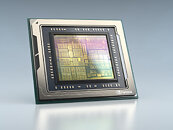- Joined
- Aug 19, 2017
- Messages
- 2,999 (1.06/day)
Nintendo has officially announced that its next-generation Switch console will feature backward compatibility, allowing players to use their existing game libraries on the new system. However, those eagerly awaiting the console's release may need to exercise patience as launch expectations have shifted to early 2025. On the official X account, Nintendo has announced: "At today's Corporate Management Policy Briefing, we announced that Nintendo Switch software will also be playable on the successor to Nintendo Switch. Nintendo Switch Online will be available on the successor to Nintendo Switch as well. Further information about the successor to Nintendo Switch, including its compatibility with Nintendo Switch, will be announced at a later date."
While the original Switch evolved from a 20 nm Tegra X1 to a more power-efficient 16 nm Tegra X1+ SoC (both featuring four Cortex-A57 and four Cortex-A53 cores with GM20B Maxwell GPUs), the Switch 2 is rumored to utilize a customized variant of NVIDIA's Jetson Orin SoC, now codenamed T239. The new chip represents a significant upgrade with its 12 Cortex-A78AE cores, LPDDR5 memory, and Ampere GPU architecture with 1,536 CUDA cores, promising enhanced battery efficiency and DLSS capabilities for the handheld gaming market. With the holiday 2024 release window now seemingly off the table, the new console is anticipated to debut in the first half of 2025, marking nearly eight years since the original Switch's launch.


View at TechPowerUp Main Site | Source
While the original Switch evolved from a 20 nm Tegra X1 to a more power-efficient 16 nm Tegra X1+ SoC (both featuring four Cortex-A57 and four Cortex-A53 cores with GM20B Maxwell GPUs), the Switch 2 is rumored to utilize a customized variant of NVIDIA's Jetson Orin SoC, now codenamed T239. The new chip represents a significant upgrade with its 12 Cortex-A78AE cores, LPDDR5 memory, and Ampere GPU architecture with 1,536 CUDA cores, promising enhanced battery efficiency and DLSS capabilities for the handheld gaming market. With the holiday 2024 release window now seemingly off the table, the new console is anticipated to debut in the first half of 2025, marking nearly eight years since the original Switch's launch.


View at TechPowerUp Main Site | Source






